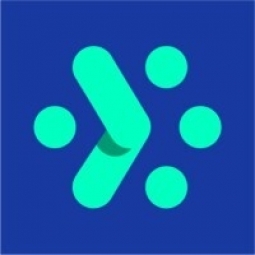Technology Category
- Application Infrastructure & Middleware - Data Exchange & Integration
- Platform as a Service (PaaS) - Application Development Platforms
Applicable Industries
- E-Commerce
- Retail
Applicable Functions
- Sales & Marketing
Use Cases
- Retail Store Automation
- Time Sensitive Networking
Services
- System Integration
About The Customer
Fashionette is the largest retailer specializing in designer handbags for German-speaking markets. Established in 2008, the ecommerce giant offers a broad range of products curated by fashion experts and marketed through influencers as well as online and offline advertising. Despite making record-breaking strides every year, the company was struggling with data integration, as their tools were not keeping pace with the rapid business growth. They were managing data from over 40 sources, a demanding workload that required teams to log into various tools, download reports, and manually copy numbers into sheets.
The Challenge
Fashionette, a leading retailer specializing in designer handbags for German-speaking markets, was facing a significant challenge in managing and integrating data from over 40 sources. The company's data integration tools were not keeping pace with the rapid business growth. The process of logging into various tools, downloading reports, and manually copying numbers into sheets was tedious and time-consuming. The company sought a solution that would integrate all the data into a single, sophisticated platform that would serve departments across the organization. The goal was to gain a comprehensive view of their entire advertising activities, enabling them to analyze and strategically increase ROI, ensuring the company's continued growth and success.
The Solution
Fashionette turned to Adverity's solution to address their data integration challenges. Adverity provided a platform that allowed Fashionette to tap into granular data through an extensive selection of key performance indicators (KPIs). The platform was capable of comparing and blending data from over 40 sources, including cross-channel information. Adverity's solution provided a standardized structure that enabled various teams to work together through user-friendly, individualized dashboards. These intuitive dashboards eliminated the need to manually switch between accounts and platforms to access datasets. Instead of logging into various tools to download reports and manage spreadsheets, the team received daily, automatic reports, enabling them to rapidly gain meaningful insights.
Operational Impact
Quantitative Benefit

Case Study missing?
Start adding your own!
Register with your work email and create a new case study profile for your business.
Related Case Studies.

Case Study
Improving Production Line Efficiency with Ethernet Micro RTU Controller
Moxa was asked to provide a connectivity solution for one of the world's leading cosmetics companies. This multinational corporation, with retail presence in 130 countries, 23 global braches, and over 66,000 employees, sought to improve the efficiency of their production process by migrating from manual monitoring to an automatic productivity monitoring system. The production line was being monitored by ABB Real-TPI, a factory information system that offers data collection and analysis to improve plant efficiency. Due to software limitations, the customer needed an OPC server and a corresponding I/O solution to collect data from additional sensor devices for the Real-TPI system. The goal is to enable the factory information system to more thoroughly collect data from every corner of the production line. This will improve its ability to measure Overall Equipment Effectiveness (OEE) and translate into increased production efficiencies. System Requirements • Instant status updates while still consuming minimal bandwidth to relieve strain on limited factory networks • Interoperable with ABB Real-TPI • Small form factor appropriate for deployment where space is scarce • Remote software management and configuration to simplify operations

Case Study
Digital Retail Security Solutions
Sennco wanted to help its retail customers increase sales and profits by developing an innovative alarm system as opposed to conventional connected alarms that are permanently tethered to display products. These traditional security systems were cumbersome and intrusive to the customer shopping experience. Additionally, they provided no useful data or analytics.

Case Study
How Sirqul’s IoT Platform is Crafting Carrefour’s New In-Store Experiences
Carrefour Taiwan’s goal is to be completely digital by end of 2018. Out-dated manual methods for analysis and assumptions limited Carrefour’s ability to change the customer experience and were void of real-time decision-making capabilities. Rather than relying solely on sales data, assumptions, and disparate systems, Carrefour Taiwan’s CEO led an initiative to find a connected IoT solution that could give the team the ability to make real-time changes and more informed decisions. Prior to implementing, Carrefour struggled to address their conversion rates and did not have the proper insights into the customer decision-making process nor how to make an immediate impact without losing customer confidence.

Case Study
Ensures Cold Milk in Your Supermarket
As of 2014, AK-Centralen has over 1,500 Danish supermarkets equipped, and utilizes 16 operators, and is open 24 hours a day, 365 days a year. AK-Centralen needed the ability to monitor the cooling alarms from around the country, 24 hours a day, 365 days a year. Each and every time the door to a milk cooler or a freezer does not close properly, an alarm goes off on a computer screen in a control building in southwestern Odense. This type of alarm will go off approximately 140,000 times per year, equating to roughly 400 alarms in a 24-hour period. Should an alarm go off, then there is only a limited amount of time to act before dairy products or frozen pizza must be disposed of, and this type of waste can quickly start to cost a supermarket a great deal of money.

Case Study
Supermarket Energy Savings
The client had previously deployed a one-meter-per-store monitoring program. Given the manner in which energy consumption changes with external temperature, hour of the day, day of week and month of year, a single meter solution lacked the ability to detect the difference between a true problem and a changing store environment. Most importantly, a single meter solution could never identify root cause of energy consumption changes. This approach never reduced the number of truck-rolls or man-hours required to find and resolve issues.








